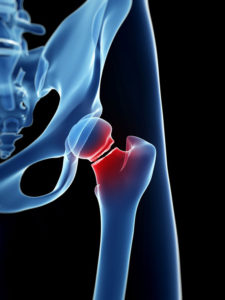Guide By – Los Angeles Nursing Home Falls Attorney
 Falls at nursing homes and assisted living facilities are preventable. Yet, unfortunately, patients in in the long-term care setting fall with an alarming frequency. When a fall occurs, this is often a sign of elder abuse & neglect. A Los Angeles nursing home falls attorney and assisted living falls lawyer at Cherepinskiy Law Firm is an expert in the field and will zealously advocate for the rights of the fall victims or their families.
Falls at nursing homes and assisted living facilities are preventable. Yet, unfortunately, patients in in the long-term care setting fall with an alarming frequency. When a fall occurs, this is often a sign of elder abuse & neglect. A Los Angeles nursing home falls attorney and assisted living falls lawyer at Cherepinskiy Law Firm is an expert in the field and will zealously advocate for the rights of the fall victims or their families.
Falls in the Elderly
Fall-induced injuries constitute over a third of emergency room presentations by patients of skilled nursing facilities. According to the United States Centers for Disease Control and Prevention (“CDC”), falls at nursing homes are often unreported. Nevertheless, on an annual basis, an average 100-bed skilled nursing facility reports 100 to 200 patient falls to the CDC.
Falls in the long-term care setting, including nursing homes and assisted living facilities, frequently result in catastrophic injuries and even fatalities. Each year, hundreds of elderly nursing home patients die as a result of fall-related injuries. If elderly patients are able to survive their falls, they often suffer serious and debilitating injuries (e.g. hip fractures and brain injuries) resulting in disabilities and reduced independence, functional abilities, and the overall quality of life. Elderly nursing home patients can develop a fear of falling which, in turn, results in depression, social isolation, and further functional decline. Nursing homes, as well as assisted living facilities, must utilize appropriate fall precautions aimed at preventing falls of their elderly patients and residents. Cherepinskiy Law Firm, as the Los Angeles nursing home falls attorney, stands ready to fight for those elderly who suffered falls and resulting injuries due to elder care facilities’ failures to use proper fall prevention methods.
Statistics Regarding Falls in Nursing Homes – The Numbers Are Staggering
Based on the study and statistical analysis by the CDC:
- In 2003, the nation’s nursing homes housed approximately 1.5 million patients who were over the age of 65. In CDC’s assessment, if this trend continues, by 2030, the number of nursing home patients will reach approximately 3 million – i.e. it will double.
- Every year, 50% to 75% of nursing home patients suffer a fall. This rate is two times higher than the rate of falls for elderly individuals residing at home.
- Based on the CDC’s data, approximately 5% of elderly individuals reside in skilled nursing facilities. However, in the same age group, nursing home residents comprise 20% of all fall-related deaths.
- Sadly, during their stay at nursing homes, patients frequently suffer more than just one fall. In the CDC’s statistical assessment, the average annual rate of falls at the nation’s nursing homes is 2.6 times per patient.
- Approximately 35% of all fall-related injuries are suffered by non-ambulatory nursing home patients (i.e. those patients who cannot walk).
- Based on the CDC’s statistical analysis, routine use of restraints does not lower the risk of falls for nursing home patients.
- Approximately 10% – 20% of falls cause elderly nursing home patients to suffer serious injuries.
- Approximately 2% – 6% of falls cause elderly nursing home patients to suffer fractures.
- According to the CDC’s data, every year, fall-induced injuries cause the death of approximately 1,800 elderly nursing home patients.
Elderly Patients are Susceptible to Falls
Based on its analysis of the data, the CDC concluded that nursing home patients are typically older and, as a result, weaker and frailer, than the senior citizens who reside in the community. Additionally, elderly nursing home patients are highly susceptible to falls because they:
- Generally, have more chronic diseases and health issues;
- Have cognitive and memory impairments;
- Have ambulation (walking) difficulties due to muscle weakness, poor balance and gait, as well as other physical impairments. In fact, approximately 24% of nursing home falls involve patients with these difficulties; and
- Need assistance with bathing, transfers (e.g. from bed-to-chair), and other activities of daily living.
Neglect and Abuse Cause Falls in the Elderly in Nursing Homes and Assisted Living Facilities
The following are examples of fall-causing misconduct on the part of nursing homes and assisted living facilities:
- Insufficient lighting (which impairs the ability to see potential obstacles)
- Wet and slippery floors
- Improperly maintained wheelchairs
- Improper use of walking aids (e.g. walkers)
- Failures to perform a proper “fall risk” assessment, and develop an adequate plan of care
- Failures to provide necessary one or two-person assistance for patients and residents who have impaired mobility (i.e. difficulties with ambulation and transfers)
- Failures to install or respond to call lights
- Failures to provide appropriate fall precautions such as:
-
- bed alarms
- fall mats
- low beds
- non-skid socks
- Medications, especially when they are used as chemical restraints:
-
- Anti-anxiety medications
- Sedatives
Fall Prevention in the Elderly
 The goal of fall prevention in nursing homes and skilled nursing facilities demands a complex approach consisting of careful assessment and planning, and implementation of appropriate methods and modalities. Fall prevention heavily depends on the efforts at the organizational and management level – such as the introduction of appropriate policies and procedures, provision of educational programs regarding the fall risk factors and prevention methods, as well as hiring of sufficient and qualified staff.
The goal of fall prevention in nursing homes and skilled nursing facilities demands a complex approach consisting of careful assessment and planning, and implementation of appropriate methods and modalities. Fall prevention heavily depends on the efforts at the organizational and management level – such as the introduction of appropriate policies and procedures, provision of educational programs regarding the fall risk factors and prevention methods, as well as hiring of sufficient and qualified staff.
Specifically, after a patient or a resident is carefully assessed, a plan of care must be prepared. If an elderly individual is determined to be a “fall risk” patient, the care plan must provide for appropriate fall prevention modalities such as bed alarms, fall mats, low beds, and non-skid socks. Efforts must be made to promote patient participation in physical activities, which helps with maintaining patients’ mobility and muscle strength and, therefore, indirectly prevents falls. Fall prevention methods must not involve the use of physical restraints (e.g. keeping residents in a hospital bed with raised side rails). If chemical restraints are used for the staff’s convenience (e.g. medicating patients with psychotherapeutic drugs to make them more compliant), the resulting balance and gait difficulties frequently lead to falls. Both of these improper restraint practices constitute elder abuse.

Finally, adequate staffing levels must be maintained at all times. The failure to provide a sufficient number of qualified staff members makes it impossible to properly follow the plan of care.
For instance, a patient with impaired mobility needs a two-person assistance with transfers from bed-to-chair and with walking. Instead of providing 2 staff members to assist the patient, an understaffed nursing home provides only one staff member to assist the patient to the restroom. The assistant cannot handle the patient’s weight and drops the patient.
In another example involving an elderly patient with similar mobility difficulties, he or she is left unattended for extended periods of time, and the overworked and insufficient staff fails to respond to the call lights. The desperate patient attempts to get out of bed unassisted and falls. In both examples, the patient’s fall can result in a fatal head trauma (e.g. a subdural hematoma) or a hip fracture that causes the frail patient to die despite a hip replacement surgery.
Take Action! Promptly Contact a Los Angeles Nursing Home Falls Lawyer for a Free Consultation
As a Los Angeles nursing home falls lawyer, Dmitriy Cherepinskiy, and his firm, zealously and aggressively pursue justice. If you or your loved one suffered a fall at a nursing home or an assisted living facility, this firm will fight to vindicate your rights. If a fall at an assisted living facility or a nursing home caused the death of a loved one, your compassionate nursing home lawyer will battle tirelessly in a wrongful death case.
If you suspect elder abuse in the form of the failure to prevent a fall, please call or fill out an electronic contact form today to request a free consultation. Cherepinskiy Law Firm, as the Los Angeles assisted living falls attorney, will work vigorously to bring the wrongdoers to justice, and to obtain the maximum case value and compensation you deserve.
This firm fight for clients throughout California, including Los Angeles, Orange County, as well as Ventura, Riverside and San Bernardino Counties.
Sources
1. https://www.cdc.gov/homeandrecreationalsafety/falls/
2. https://www.cdc.gov/homeandrecreationalsafety/falls/adultfalls.html
3. https://www.cdc.gov/homeandrecreationalsafety/falls/adulthipfx.html
4. https://partnershipforpatients.cms.gov/p4p_resources/tsp-injuriesandfallsfromimmobility/toolinjuriesandfallsfromimmobility.html
5. https://psnet.ahrq.gov/primers/primer/40/Falls







